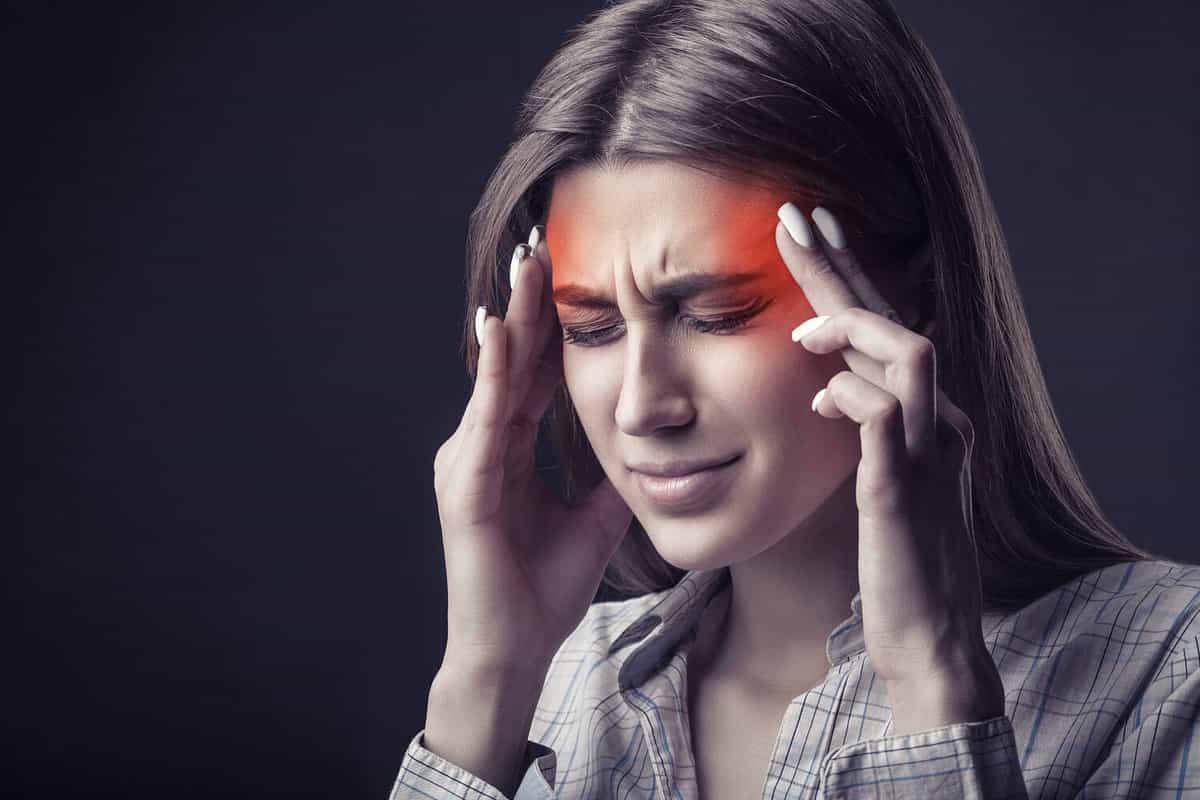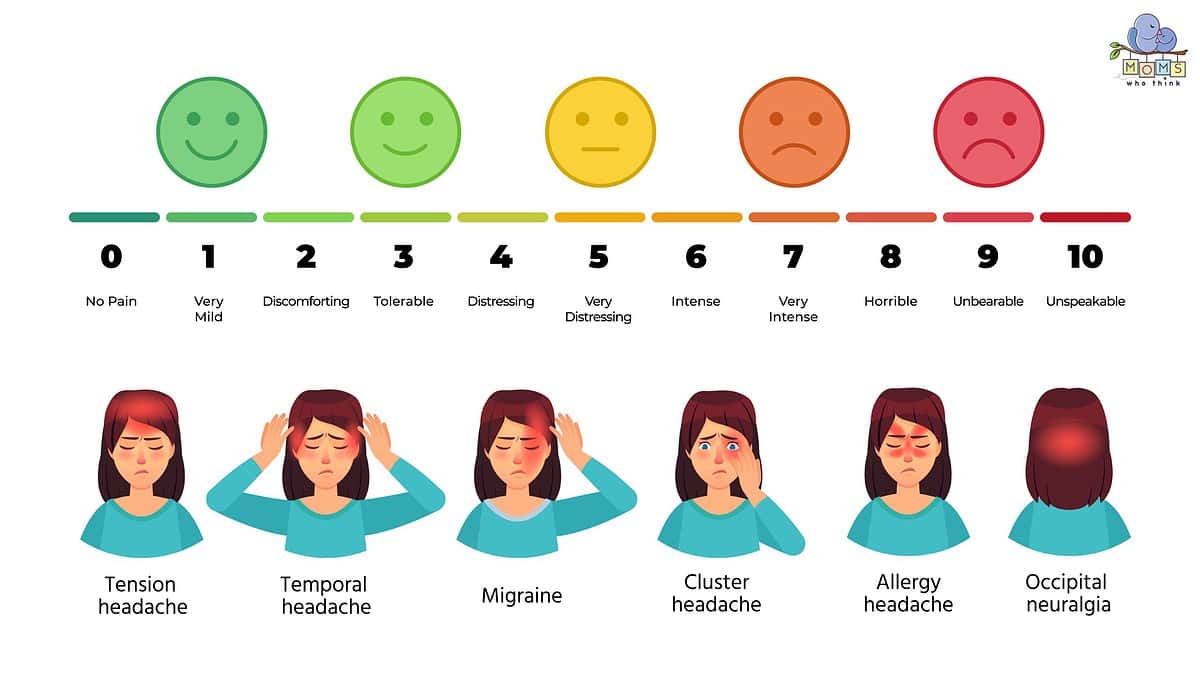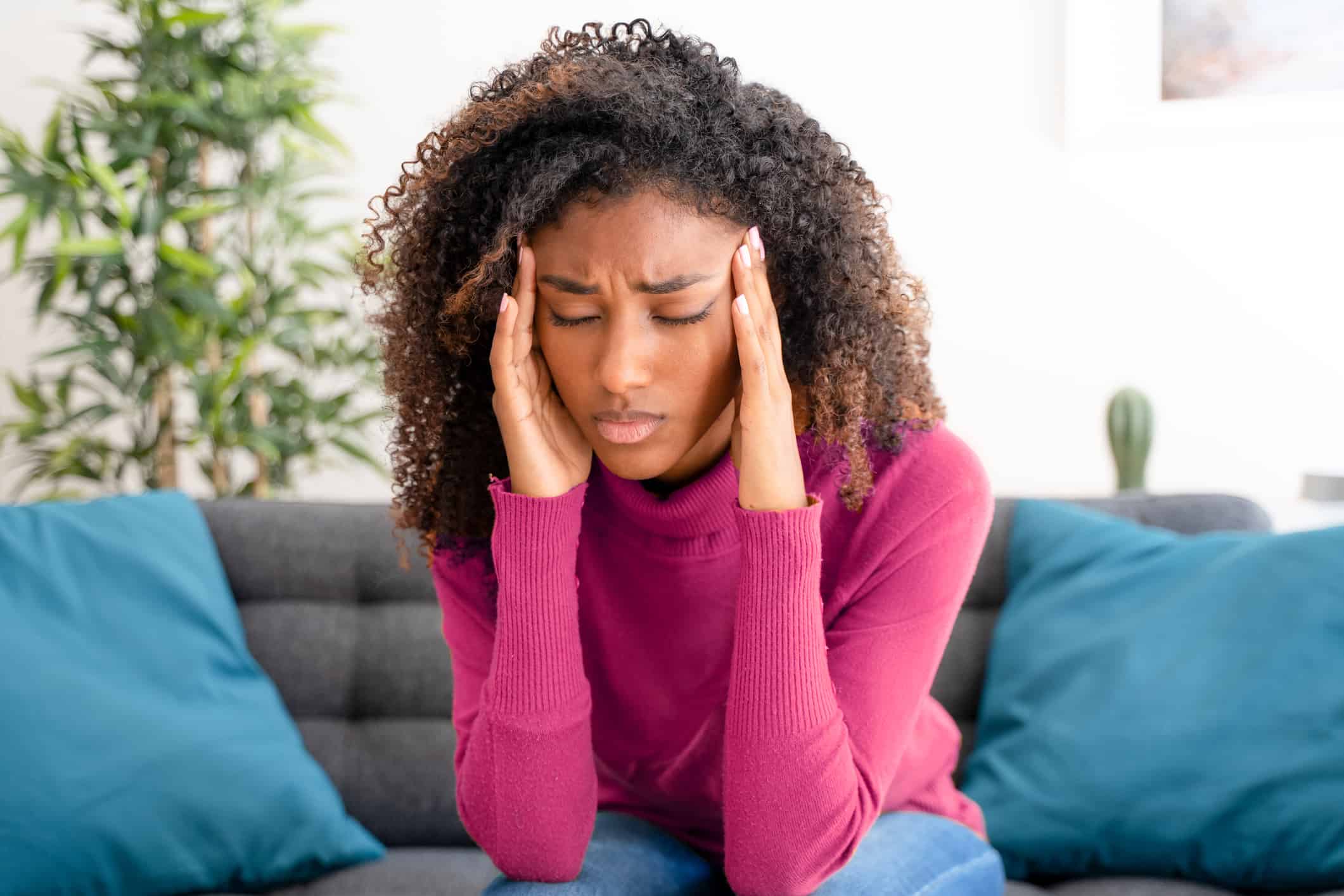Headaches are a bummer. The pain and discomfort are enough to want to crawl under the covers and hide until the pain stops. Unfortunately, they are a part of life, and most people will get a headache at some point. Most headaches are not cause for alarm and can be treated with a quick trip to the pharmacy for over-the-counter medicine. Other headaches may require a lifestyle change or a doctor visit. If you find yourself at the doctor, they will need to know how bad the pain you are experiencing. This is where the free headache chart can help you find the language to explain the intensity of the headache so you can get the right treatment and get back to your normal self.
What Are Headaches?

There are many different types of headaches.
©Artem Furman/Shutterstock.com
Headaches are quite simply a pain in your head and neck. They can be burning, aching, piercing, and throbbing. Most headaches are simple to treat, but some headaches are a sign of other more serious health conditions.
Primary Headaches
Primary headaches take place and are caused by something in the head. They can be episodic, meaning they only occur sometimes and are relatively short, like 30 minutes to a couple of hours. Chronic headaches are more of an ongoing health issue and can last much longer and be more frequent.
Tension Headache
A tension headache is often caused by stress. The tension is often in the head or neck and has a dull ache. Getting plenty of rest and finding a healthy outlet for stress can help reduce the frequency of tension headaches.
Cluster Headache
Cluster headaches get their name because they occur in clusters, sometimes several on the same day or a few days in a row. These headaches are painful with a piercing feeling. These headaches are mainly felt on just one side of the face or behind one eye. There isn't a lot of information about cluster headaches because they vary, but some studies suggest they are more common in the spring and autumn.
Ice pick Headache
Ice pick headaches gets its name because it feels like you are being stabbed in the head with an ice pick. The pain is sharp and quick and doesn't have a trigger. They are often described as being without warning.
Thunderclap Headache
A thunderclap headache feels like a wave of pain. The pain comes on slowly and then peaks, and washes away. They can be incredibly painful and can be associated with other conditions like a stroke. Do not ignore a thunderclap headache.
Secondary Headaches
Headaches that are a symptom but not the cause are called secondary headaches. They can be just as painful, and the best way to handle them is by figuring out the underlying cause and fixing that first.
Sinus Headache
Chances are you have had a sinus headache at least once in your life. They are caused by a head cold, sinus infection, or allergies. These are extremely painful with intense pressure. Treating the initial cause, like allergies or sinus infections, is the only way to cure these. Over-the-counter medicine can help, and breathing in steam from a hot shower can help relieve some of the pressure.
Hormone Headache
Those pesky hormones can cause all kinds of problems, and headaches are one. Some women get hormone headaches at the beginning of their cycle or during menstruation. Perimenopause and menopause can also cause headaches due to the ups and downs of hormones. Some women even get pregnancy headaches. Since every woman's cycle is distinct, they can be hard to cure. Some women find relief in over-the-counter pain medication, and others find it through alternative means like meditation, yoga, and changing their diet. If you are pregnant or breastfeeding, always consult with your doctor before taking any medicine, whether over-the-counter or alternative.
Exertion Headache
Extreme physical activity can cause exertion headaches. They come on immediately after some sort of physical execution and tend to be a throbbing rather than a stabbing or dull headache. These can sometimes be associated with dehydration and are fairly harmless. Getting plenty of rest, drinking water, and taking over-the-counter medications can take care of these mild headaches.
Caffeine Headache
Caffeine can cause headaches. Too much caffeine affects blood flow to the brain and can cause a dull, aching head. Limiting caffeine is the best way to avoid a caffeine headache. Anyone who regularly uses caffeine can attest to the pain of a caffeine withdrawal headache. If you consume a couple of caffeine drinks every day and then stop drinking caffeine drinks, you will get a headache from the caffeine withdrawal. It is easy to forget that caffeine is a drug. Of course, it is a legal drug and generally safe to use, but it’s still a mind-altering substance, and abusing it can cause headaches, and giving it up is just as painful. Over-the-counter medicine is the best way to treat them. And if you are trying to give up caffeine, try the gradual approach rather than quitting cold turkey.
Hypertension Headache
These headaches are connected to high blood pressure and hypertension. These can be serious, and you need to see a doctor if a hypertension headache comes on with other symptoms like blurred vision, dizziness, shortness of breath, or nosebleeds.
Headache Chart to Evaluate Pain Levels
When you speak with your healthcare professional, they will ask about the pain level of your headache. The one to ten scale is designed to help medical professionals assess the seriousness of the pain so they can determine the cause and, more importantly, the treatment.

©
The least amount of pain is a one, and the most intense pain is a ten. Of course, there will be some variation depending on the person, as some people have a stronger threshold for pain than others, but in general, this free headache chart to evaluate pain levels can help you explain the level of pain you are in. The chart is especially helpful for children or people struggling to verbalize what they are feeling.
The Difference Between Headaches and Migraines
Migraines are different from headaches; the pain is the highest on the headache chart. There are a few things that separate a migraine headache from a headache. The first is that migraine headaches are intense and extremely painful. They are so intense that the pain can affect the person's ability to do regular daily tasks. Second, migraines often have other symptoms like nausea, muscle aches, or vomiting. Some people who suffer from migraines have triggers that can cause a migraine to start. Triggers vary from person to person and could be lack of sleep, poor diet, stress, or anxiety. Some migraines have what is called an aura. According to Healthline, a migraine with an aura means that before the person feels the migraine, they will feel numb, tingly, confused, or see or hear things that are not there.
When to Seek Medical Attention

In some cases, headaches may mean a trip to the doctor.
©S_L/Shutterstock.com
Experts at Mayo Clinic advise seeking medical attention by scheduling a doctor's appointment if the headaches don't get better with over-the-counter medication like ibuprofen or Tylenol. Or if the headaches are happening more often than usual, if they are more severe and last longer than they usually do, or if they are keeping you from living your regular life like going to work or school, doing household chores, or spending time with your family.
Medical professionals can help you decide the plan of action. However, they advise to seek emergency medical care if the headaches are accompanied by blurred vision, confusion, difficulty walking, stiff neck, nausea, fainting, and vomiting.
Headaches are an unfortunate part of life, and even healthy people suffer from them. Knowing about the most common types of headaches and when to see a doctor can help you stay calm and have peace of mind. The free headache chart can help you describe your pain levels if you need to see your doctor.
The image featured at the top of this post is ©iStock.com/tommaso79
